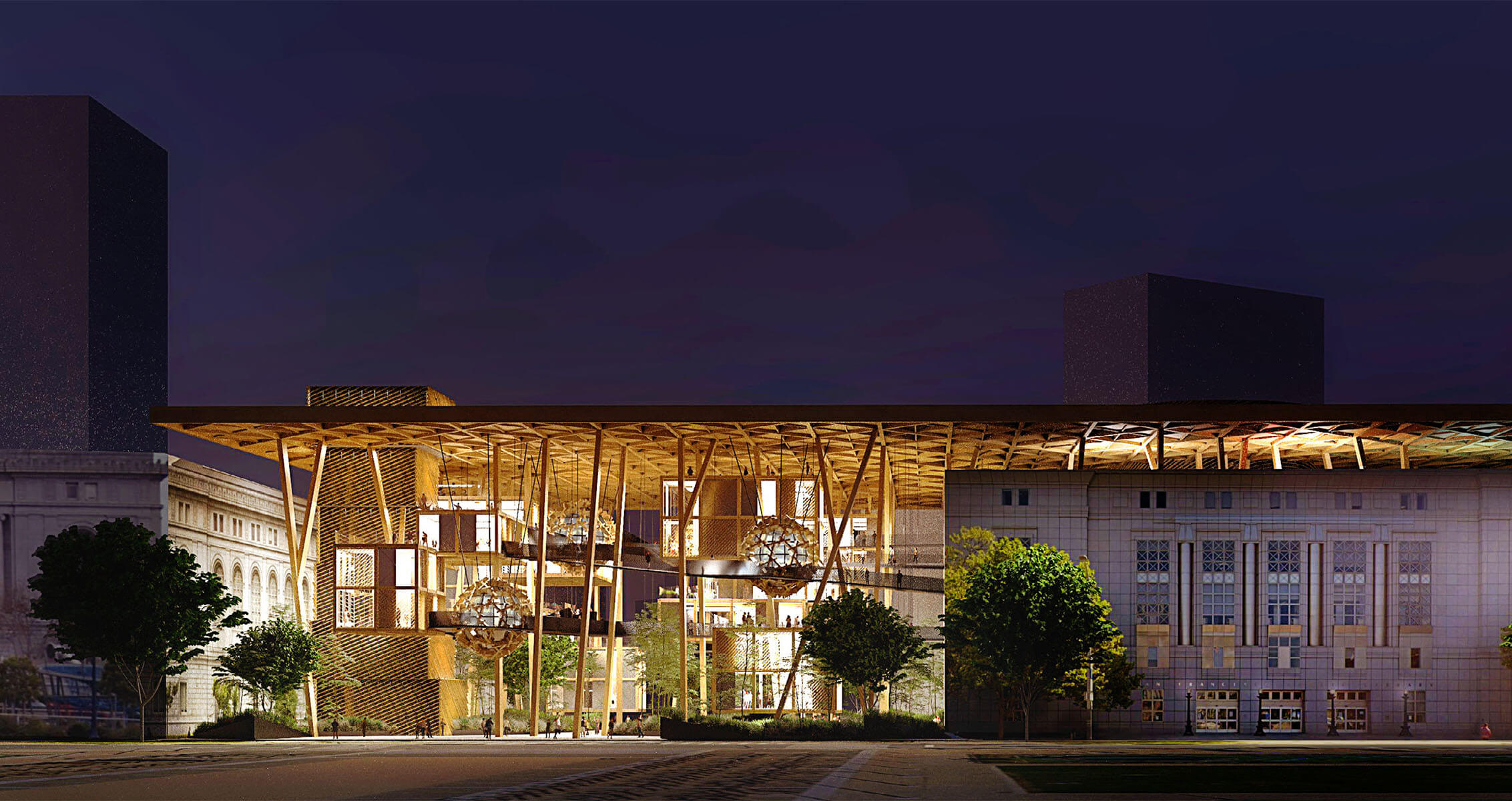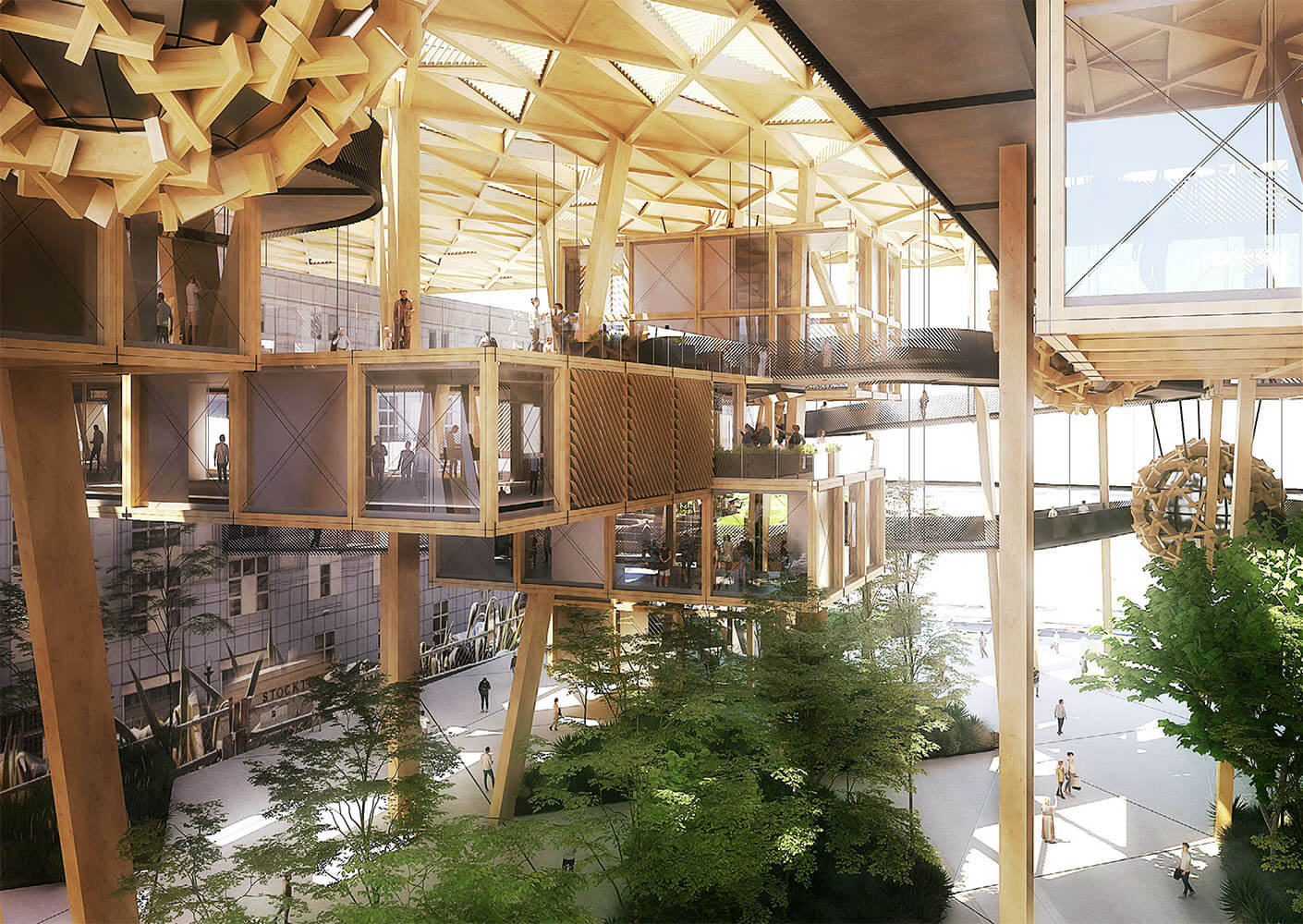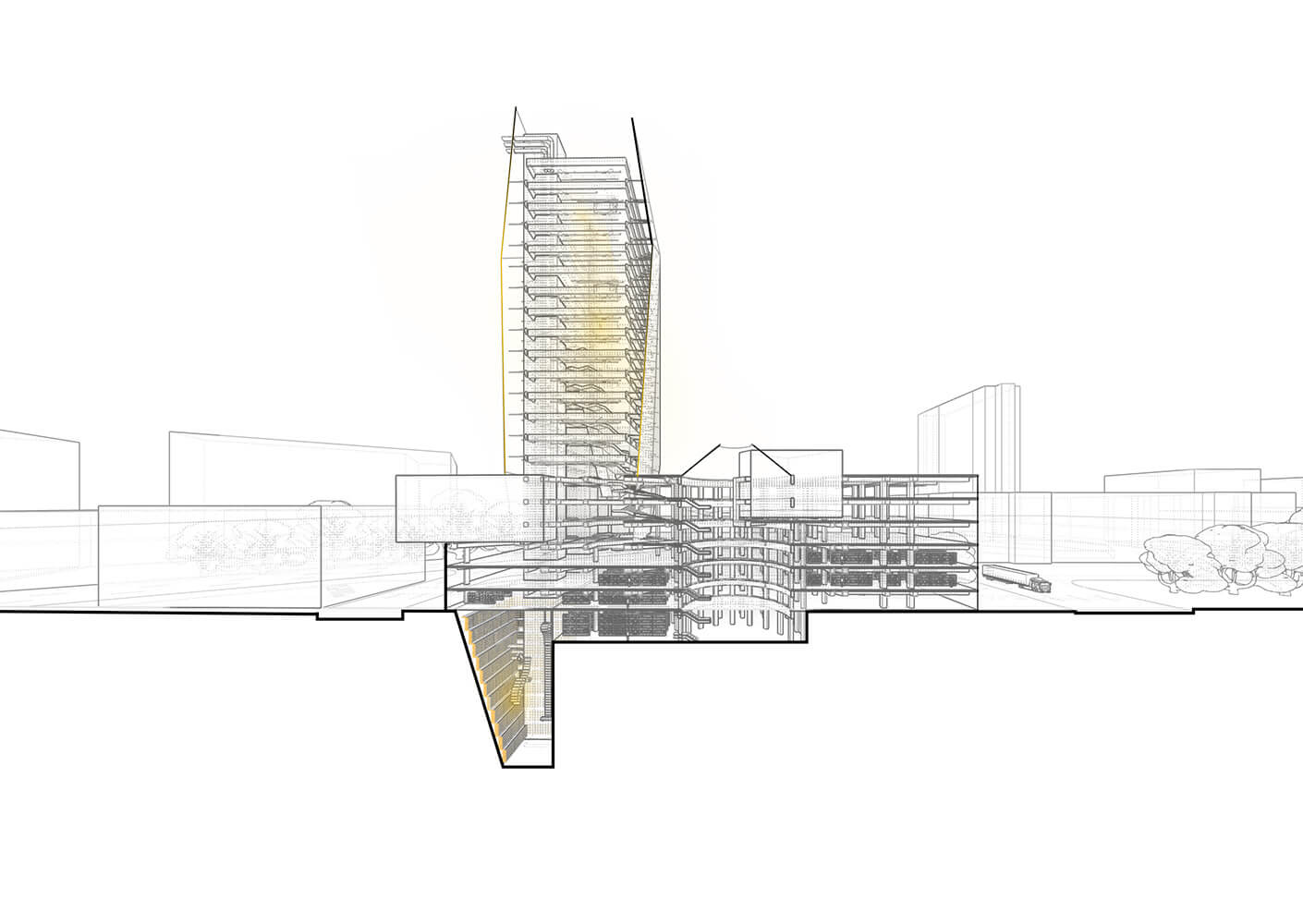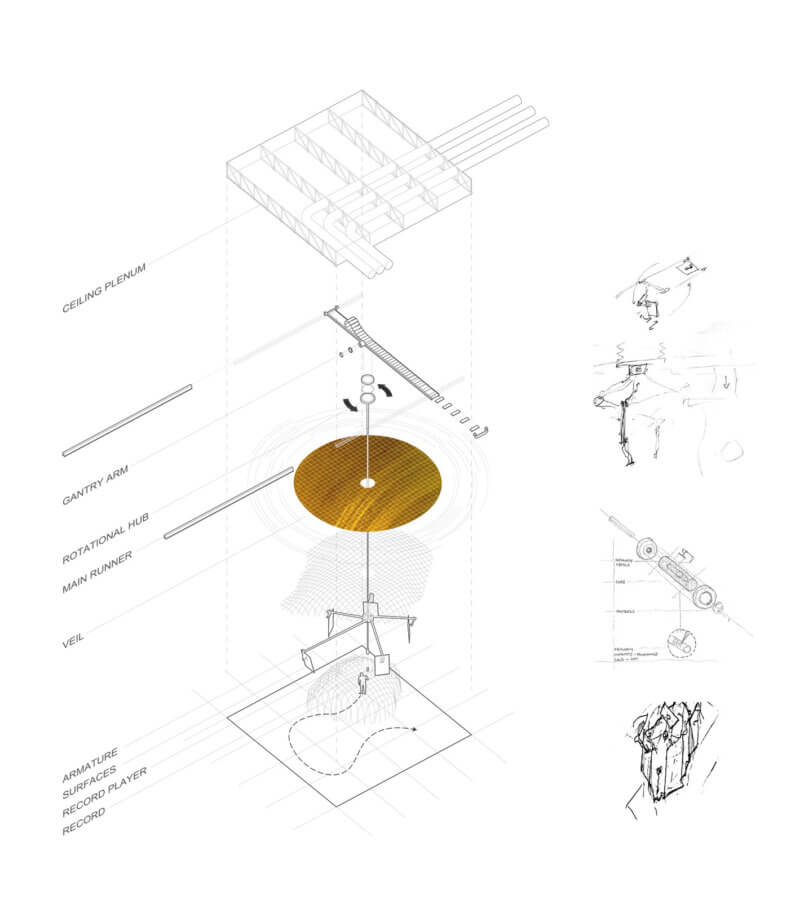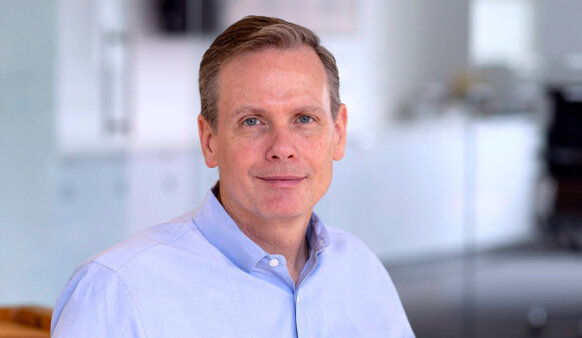• In its 20th year, Perkins&Will’s internal design ideas competition challenged teams to anticipate the socio-cultural changes that lie ahead and re-imagine how civic spaces might transform, using the San Francisco public library as a lens.
• Project teams proposed a variety of futuristic design solutions that address important issues such as civic connection, adaptive and renewable thinking, emerging technologies, and information access.
SAN FRANCISCO—A collaborative terrace where the public experiments with the latest in multi-media technology. A farmer’s market in the shadow of a vertical urban farm that harvests rainwater to grow food. A meditative sanctuary offering respite from AI-accelerated information overload. These are just some of the proposals put forth by the winners of the 2024 Phil Freelon Design Competition, Perkins&Will’s annual internal design ideas challenge that is now in its 20th year.
For this edition of the competition, participants were asked to re-imagine civic space through the lens of a library in the year 2049. Already, public libraries have had to adapt to the age of the internet and the changing habits of staff and visitors, transforming from passive collections of books to active zones for collaboration and creation. What other changes could we see in the next 25 years?
“For two decades, our next generation designers have grappled with an array of interesting issues facing our world, inventing new solutions to longstanding problems or anticipating challenges as yet unfaced,” says Chief Design Officer Casey Jones. “It’s one of the hallmarks of our firm’s design culture, which is rooted in curiosity, research, innovation, and purpose.”
The selected site for this year’s challenge is the main public library of San Francisco, which was built in 1996 and sits adjacent to City Hall. An external jury reviewed the design teams’ submissions and selected first, second, and third place winners along with three honorable mentions.
